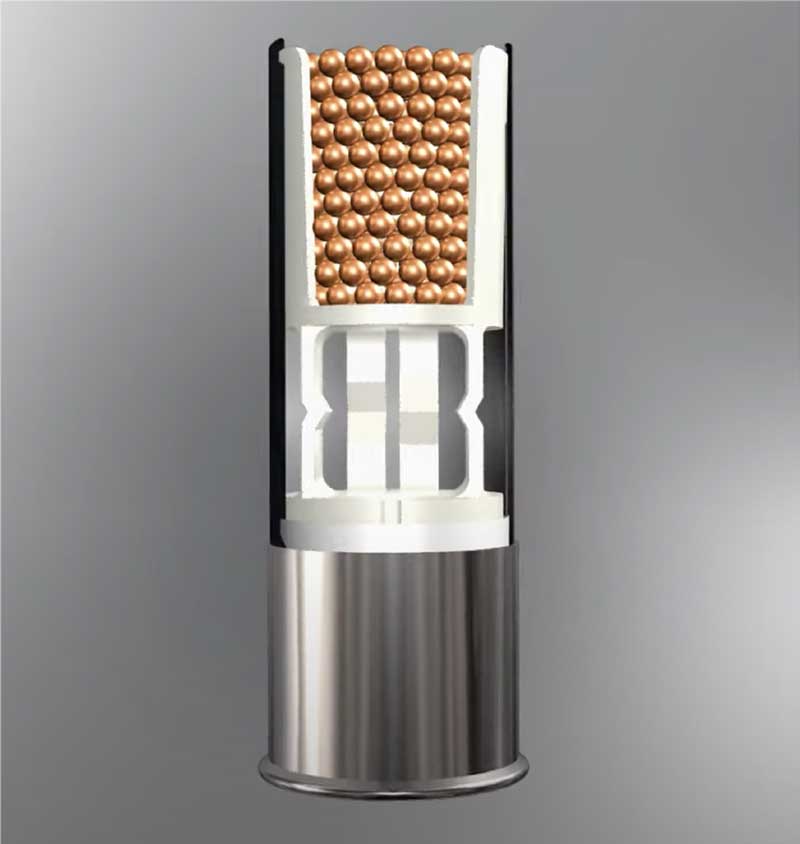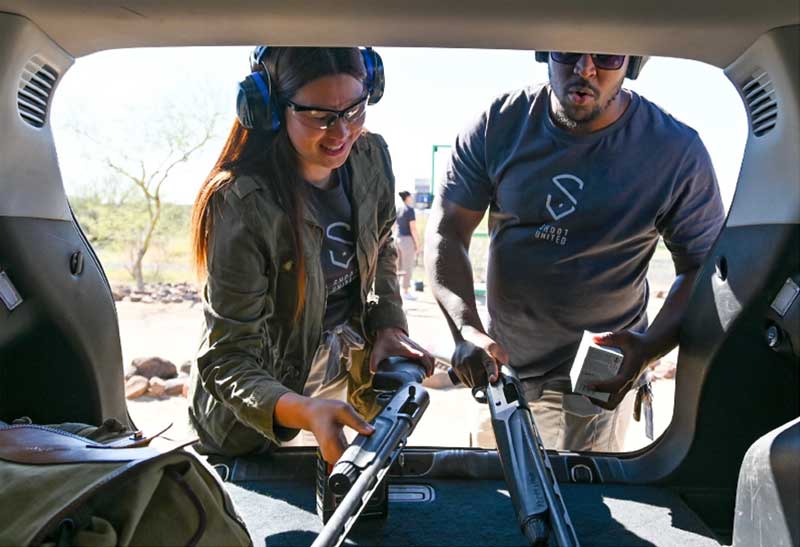Get started with Break-Action Shotguns
There are three predominant types of shotguns – pump-action, semi-automatic, over/unders, or break action. This article will introduce you to the break-action shotgun, which can be considered one of the oldest and easiest to use. By break-action, we mean the gun “breaks” in two on a hinge to expose the breech. There is typically a lever on top of the gun behind where it breaks.
Pushing the lever to one side releases a lock and allows the firearm to open. Most break-action shotguns have a single or double barrel. Opening the gun also cocks the firing pins inside the receiver (unless the shotgun has external hammers).


Once the gun is open, shotgun shells can be inserted into the barrels.
On models with extractors, it may look like the shells don’t go in all of the way. Don’t be concerned. The extractors will retract as you close the firearm.

Bring the front portion of the gun upward to close it. You should hear a “click” as it closes all the way, and that’s the sound of the shotgun locking in the closed position.

You’re now ready to shoot. Bring the shotgun up into the shooting position and look down the barrels to align the front sight or “bead” with your target. Be sure your cheek is in contact with the gun’s stock.
The sighting process is relatively straightforward on single-barrel shotguns and double-barrel models called “over-unders” (where the barrels are one atop the other). On side-by-side models, where the barrels are next to each other horizontally, the rib to sight along and bead are between the barrels. Regardless of the shotgun configuration, the principle is the same – look down the rib to align the front sight with the target. Most shotguns with two barrels are designed to pattern with the same point of impact at 40 yards.
Chokes will be discussed in another article, but, in general, your cloud of shot will be about 10 inches across by the time it is 10 yards from the barrel, 20 inches at 20 yards, 30 inches at 30 yards, and so on. Since shotguns are typically used on flying or fast-moving targets, you’ll want to “aim” where the target will be when your cloud of shot reaches it, not necessarily where the target is when you pull the trigger. This may sound confusing at first, but be patient. With a bit of practice, you’ll be hitting targets like a pro. I would maybe speak to leading a target here rather than point and aim.
It should be said here that one doesn’t “aim” a shotgun as much as point it. What comes out of the barrel is not a single projectile, as is the case with rifles and pistols, but a cloud of tiny pellets called shot. That cloud expands in diameter at the rate of approximately one inch for every yard traveled, depending on the choke used.


Once a break-action shotgun has been fired, you must open the gun again to reload. Most break-action shotguns have automatic extractors that will launch your empty shotgun shell hulls rearward as you crack the gun open. Others may raise the rear of the spent shells just a little to make it easier for you to remove them the rest of the way with your fingers. Shells that have been fired will have a small dimple in the center of the base where the firing pin struck. Remove fired shells, put them in your pocket or shell pouch, put fresh shells in the shotgun, close it, and then you’re ready to shoot again.
When finished shooting, remember to clean your shotgun before safely storing it. Cleaning instructions can be found in the owner’s manual that came with your shotgun.



